Abstract
Alderson, M. R. (1972).Brit. J. industr. Med.,29, 245-254. Some sources of error in British occupational mortality data. Shortly after the Registrar General (1855) produced the first tables of occupational mortality there were doubts about the accuracy of this material. This paper reviews the development of the decennial reports on occupational mortality and the attempts that have been made to improve the quality of the analyses. Information on a representative sample of deaths among men aged 20 to 64 dying in Bristol during 1962/63 is reported. Occupational histories were obtained for 591 (85%) of the subjects in the sample and were coded. These codings are compared with the coding of the occupations recorded at death registration.
Comparison of the occupation recorded at death registration and the final occupation from the interview indicated that there was complete agreement for 79% of subjects; there were negligible discrepancies for 6%, minor discrepancies for 5%, and major discrepancies for 10%.
Forty-one percent of the subjects were known to have had two occupations, and 13% of the subjects three or more. The occupation recorded at death registration was compared with the principal occupation recorded at interview. Complete agreement was found for 58% of the subjects, and the proportion of major differences rose to 28%. Most of these differences between the two sets of data were due to a reported change in occupation during the working life of the men in the study. It was not possible to tell if this switch from one occupation to another was a result of the onset of the disease. A number of authors have drawn attention to the fact that the onset of occupationally induced disease may be associated with declining work capacity and that this can result in an individual changing his job. Because the occupational mortality rates published by the Registrar General relate to the final occupation recorded at death registration, occupationally induced disease associated with changes in occupation will not show up in these rates. A number of ways of overcoming this difficulty are discussed; a chronological occupational history might be obtained either at death registration or by linking the occupations of an individual recorded at successive censuses. It might then be possible to calculate mortality rates by principal occupation. This would add considerably to the burden of data collection and processing, and there is no clear evidence that the rates so obtained could justify the additional effort. It is suggested that occupational mortality data, as published by the Registrar General, are extremely useful as a background to the study and understanding of occupational disease and mortality; despite doubts about the accuracy of the material, the study supports the continued production of this supplement following each decennial census.
Full text
PDF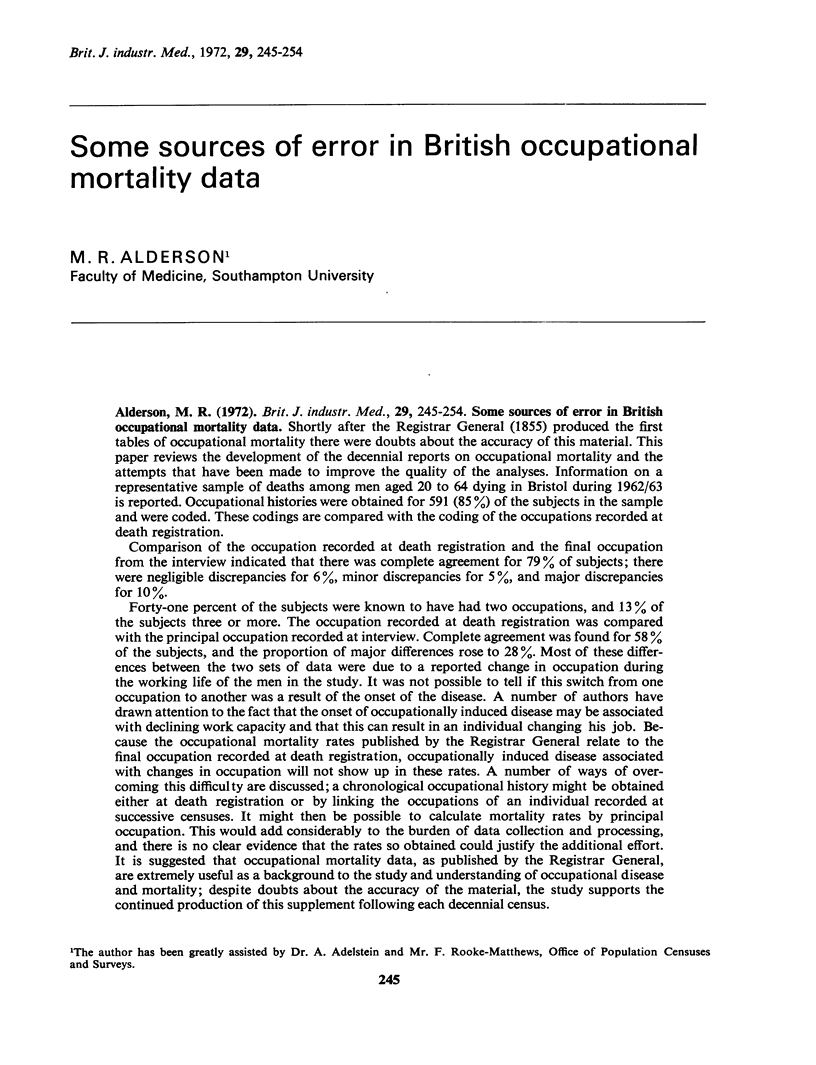
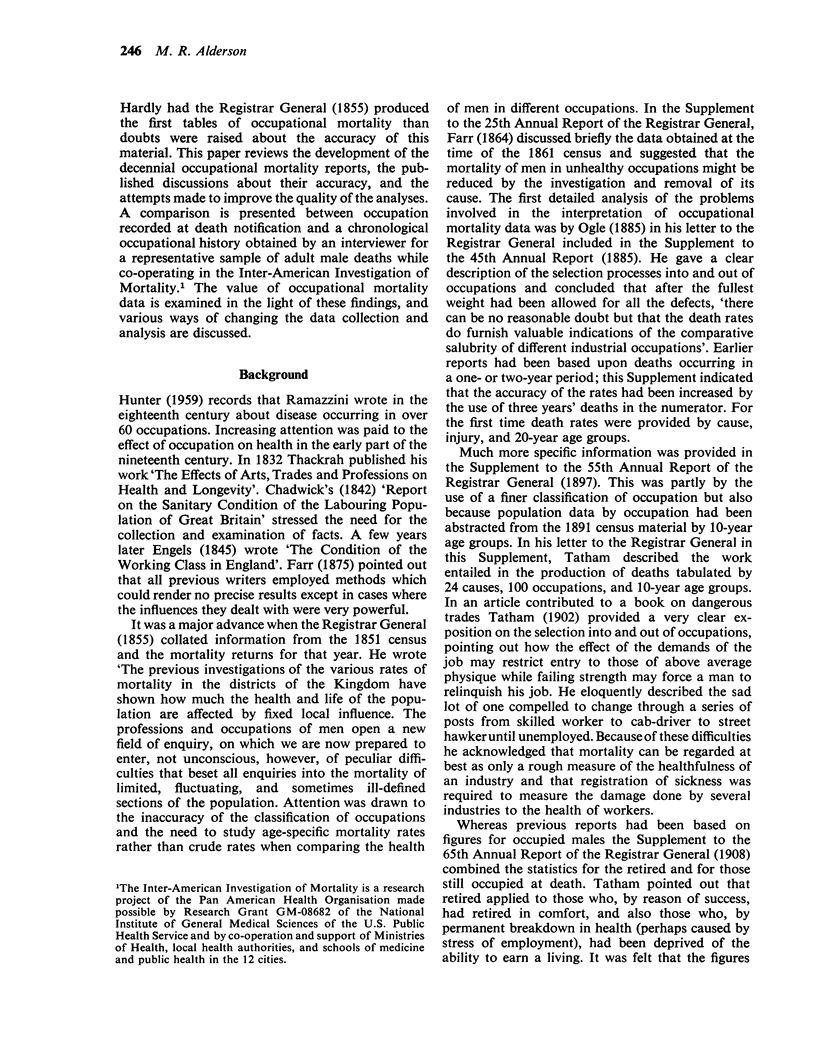
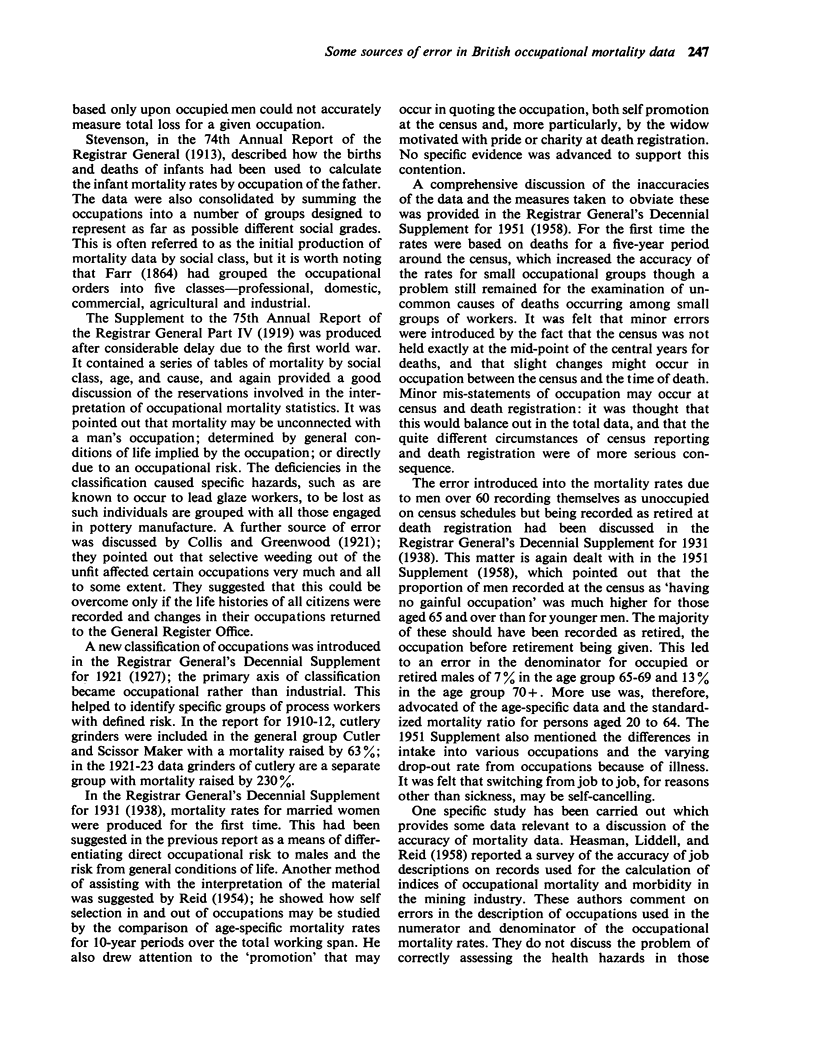
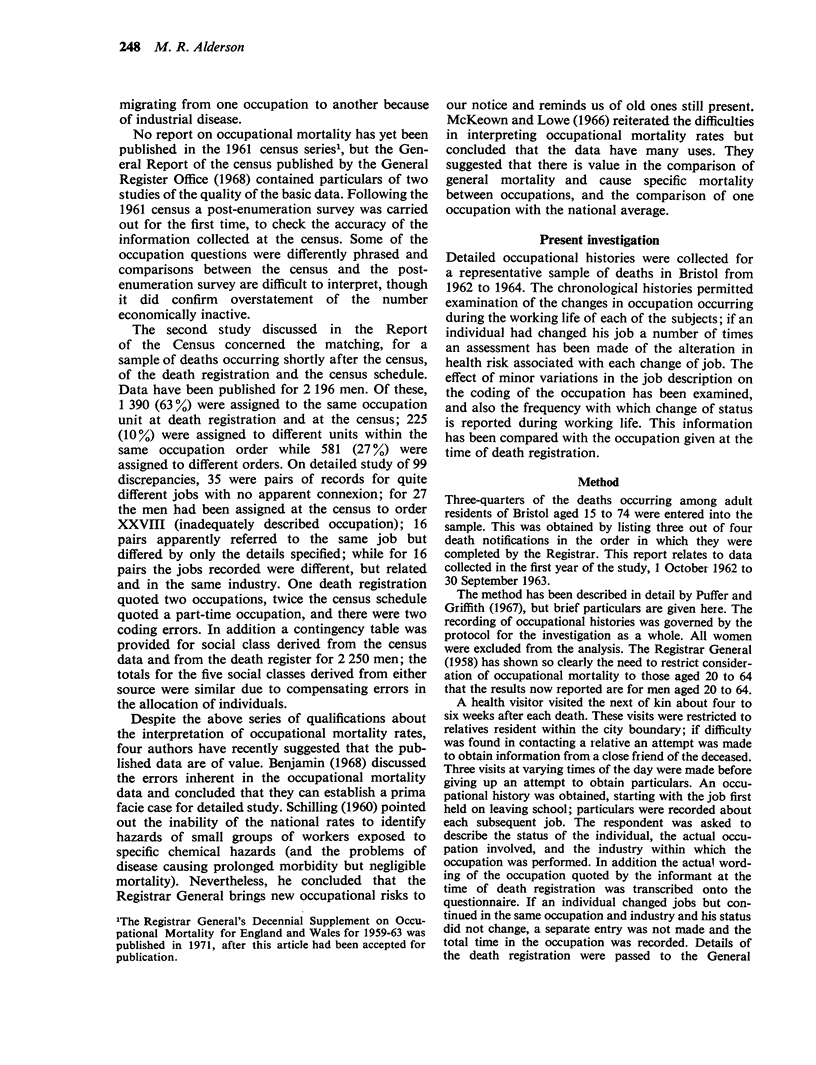
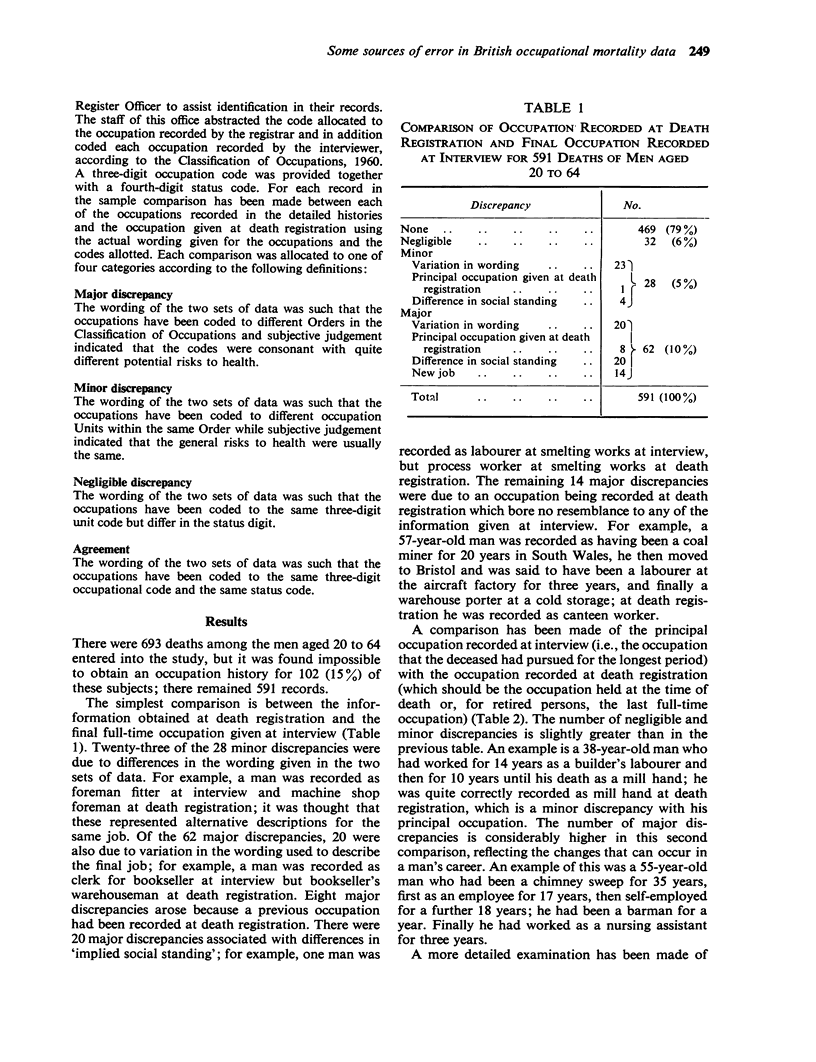
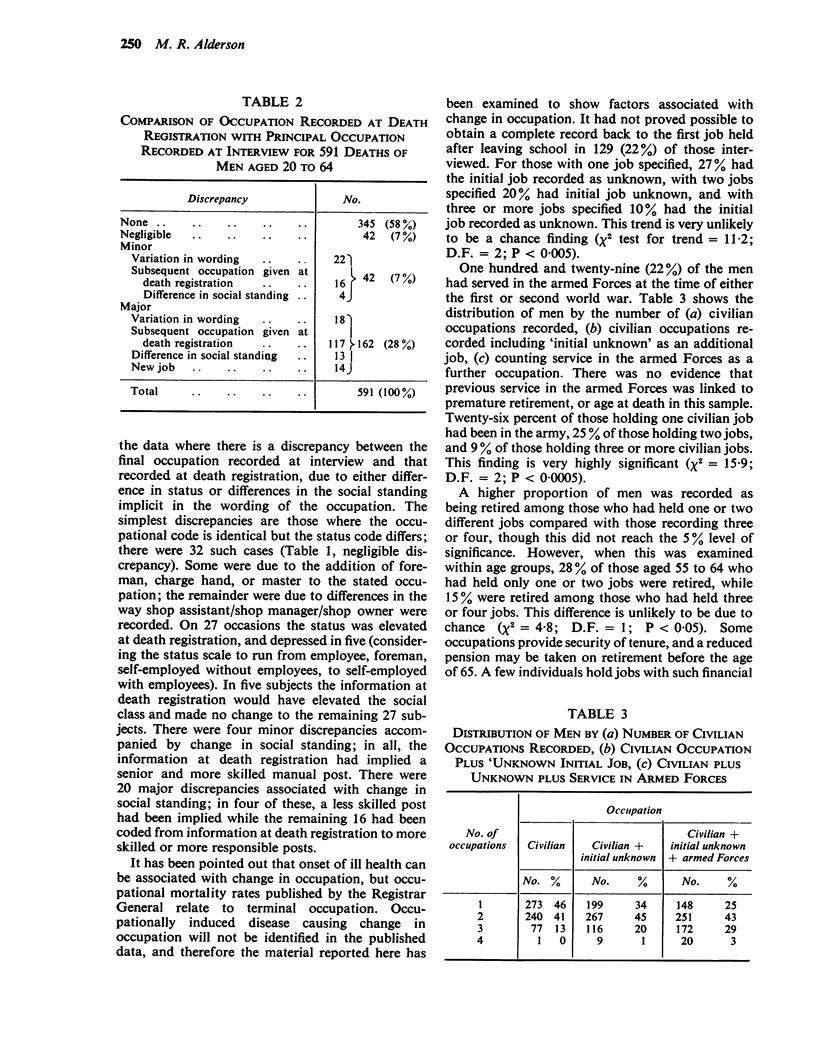
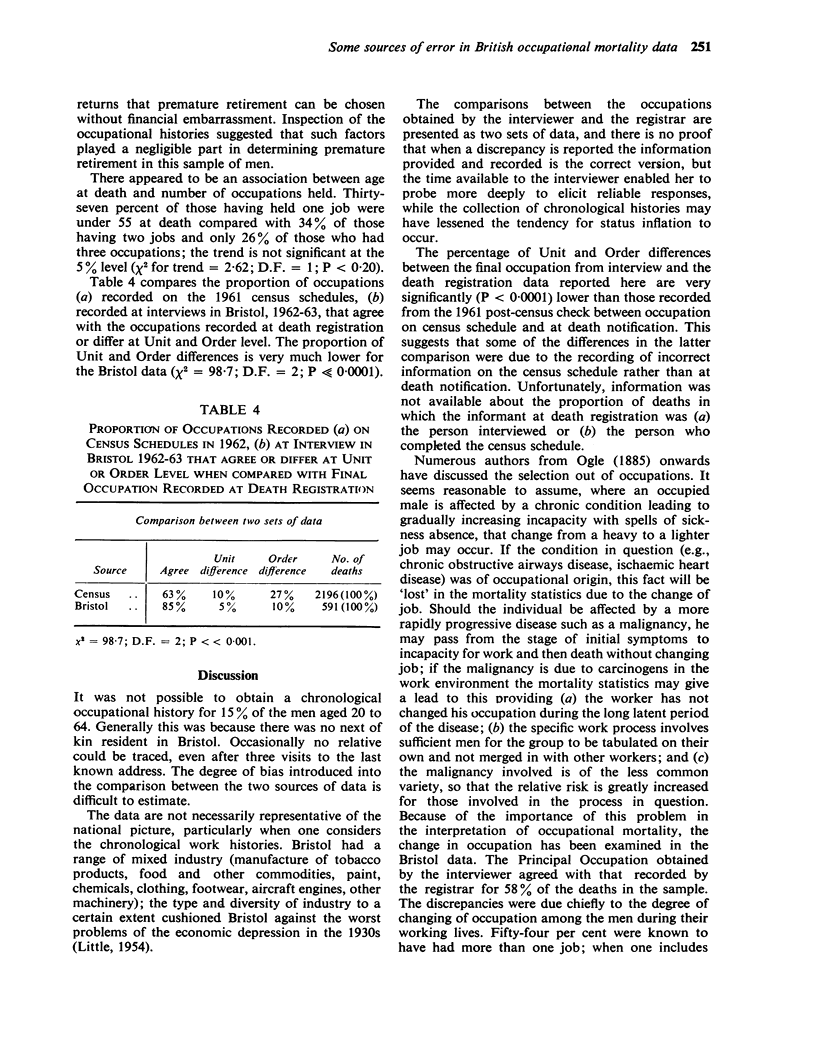
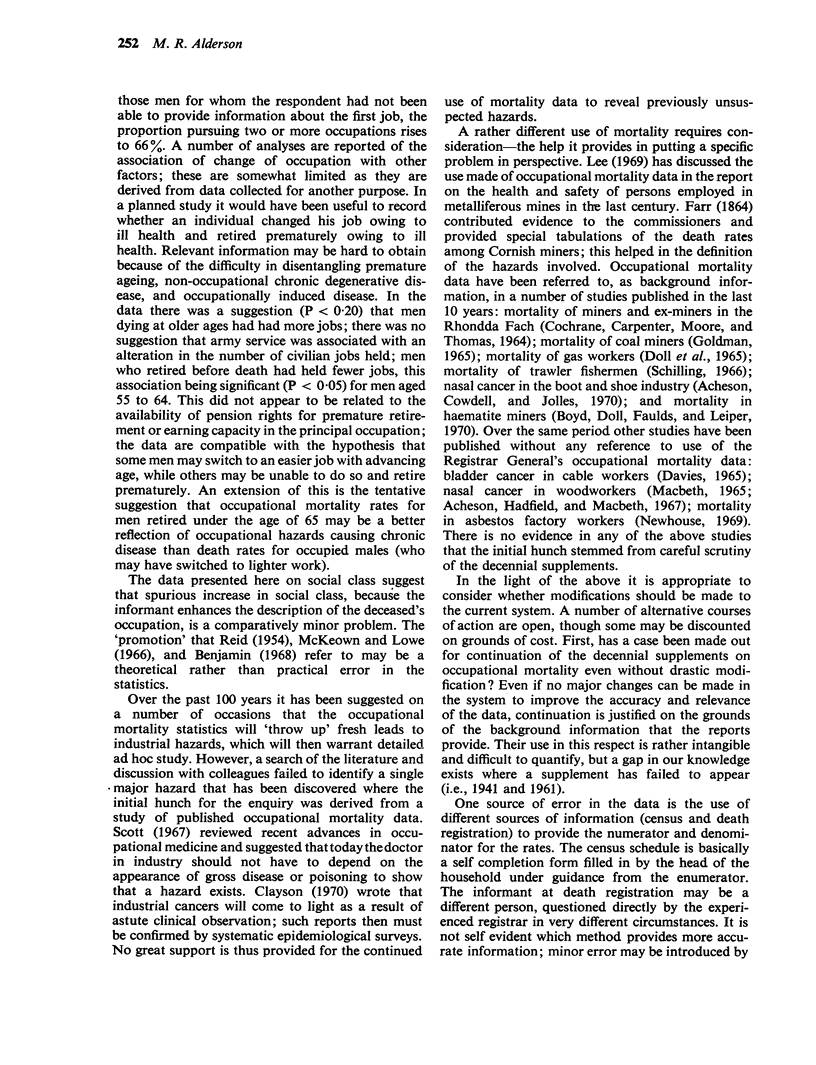
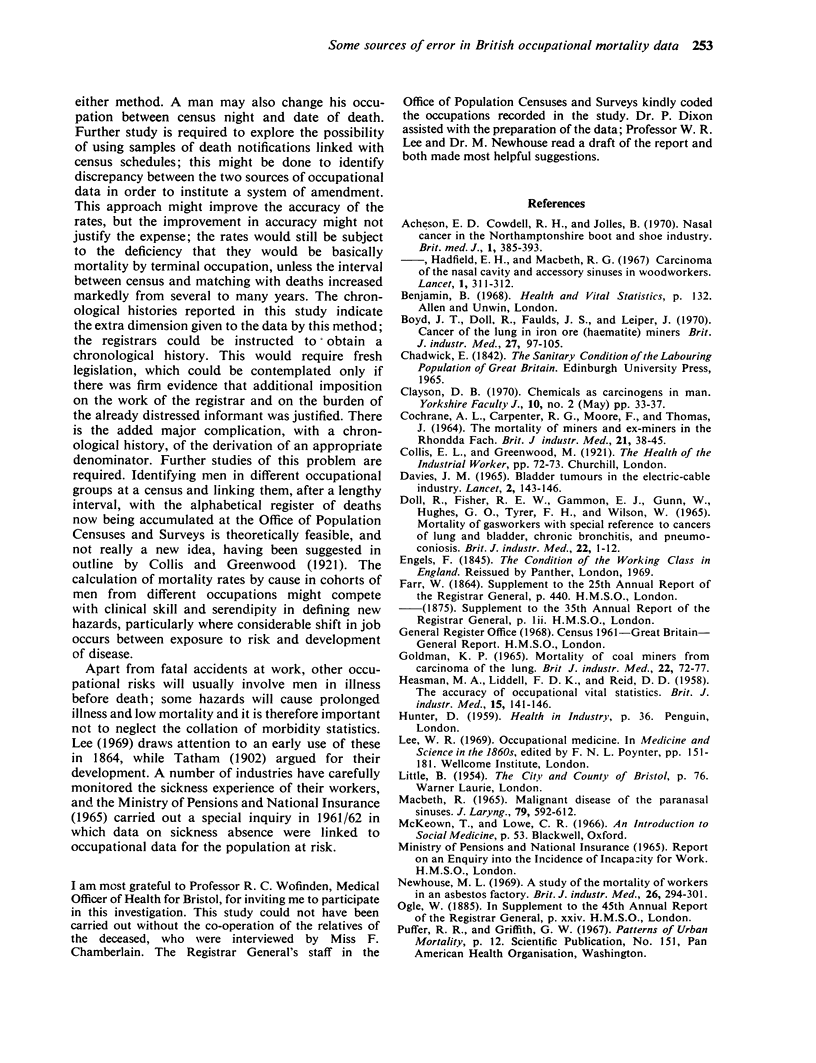
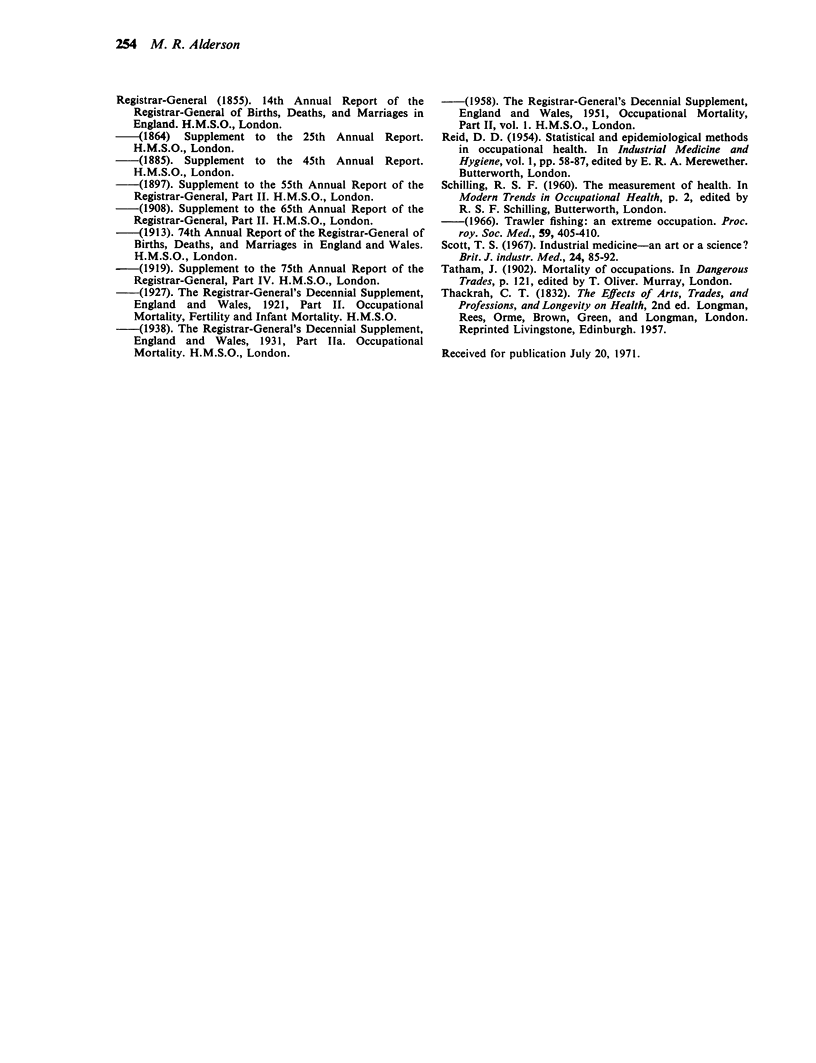
Selected References
These references are in PubMed. This may not be the complete list of references from this article.
- Acheson E. D., Cowdell R. H., Jolles B. Nasal cancer in the Northamptonshire boot and shoe industry. Br Med J. 1970 Feb 14;1(5693):385–393. doi: 10.1136/bmj.1.5693.385. [DOI] [PMC free article] [PubMed] [Google Scholar]
- Acheson E. D., Hadfield E. H., Macbeth R. G. Carcinoma of the nasal cavity and accessory sinuses in woodworkers. Lancet. 1967 Feb 11;1(7485):311–312. doi: 10.1016/s0140-6736(67)91243-3. [DOI] [PubMed] [Google Scholar]
- Boyd J. T., Doll R., Faulds J. S., Leiper J. Cancer of the lung in iron ore (haematite) miners. Br J Ind Med. 1970 Apr;27(2):97–105. doi: 10.1136/oem.27.2.97. [DOI] [PMC free article] [PubMed] [Google Scholar]
- COCHRANE A. L., CARPENTER R. G., MOORE F., THOMAS J. THE MORTALITY OF MINERS AND EX-MINERS IN THE RHONDDA FACH. Br J Ind Med. 1964 Jan;21:38–45. doi: 10.1136/oem.21.1.38. [DOI] [PMC free article] [PubMed] [Google Scholar]
- DAVIES J. M. BLADDER TUMOURS IN THE ELECTRIC-CABLE INDUSTRY. Lancet. 1965 Jul 24;2(7404):143–146. doi: 10.1016/s0140-6736(65)90228-x. [DOI] [PubMed] [Google Scholar]
- DOLL R., FISHER R. E., GAMMON E. J., GUNN W., HUGHES G. O., TYRER F. H., WILSON W. MORTALITY OF GASWORKERS WITH SPECIAL REFERENCE TO CANCERS OF THE LUNG AND BLADDER, CHRONIC BRONCHITIS, AND PNEUMOCONIOSIS. Br J Ind Med. 1965 Jan;22:1–12. doi: 10.1136/oem.22.1.1. [DOI] [PMC free article] [PubMed] [Google Scholar]
- GOLDMAN K. P. MORTALITY OF COAL-MINERS FROM CARCINOMA OF THE LUNG. Br J Ind Med. 1965 Jan;22:72–77. doi: 10.1136/oem.22.1.72. [DOI] [PMC free article] [PubMed] [Google Scholar]
- HEASMAN M. A., LIDDELL F. D., REID D. D. The accuracy of occupational vital statistics. Br J Ind Med. 1958 Jul;15(3):141–146. doi: 10.1136/oem.15.3.141. [DOI] [PMC free article] [PubMed] [Google Scholar]
- MACBETH R. MALIGNANT DISEASE OF THE PARANASAL SINUSES. J Laryngol Otol. 1965 Jul;79:592–612. doi: 10.1017/s0022215100064112. [DOI] [PubMed] [Google Scholar]
- Newhouse M. L. A study of the mortality of workers in an asbestos factory. Br J Ind Med. 1969 Oct;26(4):294–301. doi: 10.1136/oem.26.4.294. [DOI] [PMC free article] [PubMed] [Google Scholar]
- Scott T. S. Industrial medicine--an art or a science? Br J Ind Med. 1967 Apr;24(2):85–92. doi: 10.1136/oem.24.2.85. [DOI] [PMC free article] [PubMed] [Google Scholar]


